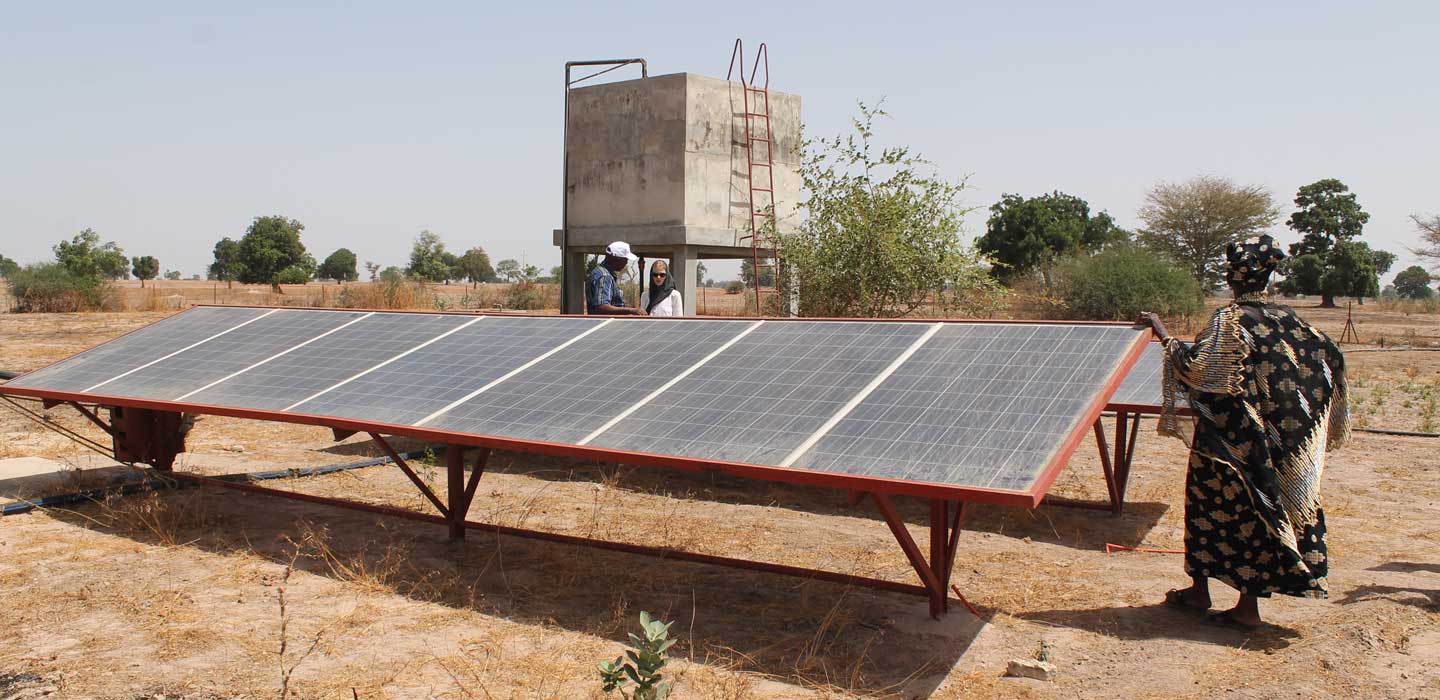The power of renewable energy
IFAD Asset Request Portlet
Asset Publisher
The power of renewable energy
By Romina Cavatassi, Karan Sehgal

IFAD/Martina Improta
At first glance it may seem access to energy shouldn’t be high on the development agenda as almost 89 per cent of the world's population has access to electricity. Although overall access appears high, the data mask disparities between rural and urban areas, with supplies often intermittent and costly. By 2030, 650 million people are likely to remain without electricity, with nine out of 10 based in sub-Saharan Africa. Presently, rural dwellers in developing countries bear the brunt of not having access to electricity. For instance, almost 2.7 billion people lack access to clean energy sources for cooking, relying instead on biomass, coal or kerosene. Household air pollution, arising primarily from smoke from cook fires, is associated with 3.8 million premature deaths annually. The collection of biomass is heavily linked with deforestation; sub-Saharan Africa saw a 12 per cent reduction in its forest area between 1990 and 2015. Large parts of rural Africa are affected, with only 3.7 per cent of rural Malawians having access to electricity, for example.
This situation represents a red flag not only for development and for the environment but also for food security. Lack of access to reliable energy is a barrier to achieving food security in many parts of the world. With a complex blend of factors, including climate change, economic stagnation and armed conflict already pushing over 821 million people into severe food insecurity, much work needs to be done to alleviate the situation. Invigorating rural areas in order to safeguard the ability of smallholders to feed growing populations represents one of the best pathways to achieve this. Investing in rural livelihoods and economies to stimulate rural transformation and ensure food security is also central to the wider goals of peacebuilding, state-building and social stability.
The rejuvenation of rural economies and the transformation of food systems requires income diversification, which in turn requires certain inputs, expertise, technologies and infrastructures-with access to energy chief among these.
Access to energy, particularly renewable energy technologies (RETs), can spark rural transformation and a transition from subsistence living to vibrant rural economies if their full potential is leveraged. Reliable energy access improves production processes by opening up the potential for pumping water and drip irrigation, operating labour saving small machinery, poultry brooding and fodder production (chaff cutters), as well as facilitating processes such as grinding, hulling, drying, packaging, threshing, milking, lighting (to extend hours for small businesses) and storage. Energising rural value chains also removes much of the drudgery from these activities, thereby appealing to the dynamic youth who will be the farmers of the future.
In many cases, RETs are also more financially viable than traditional means of energy generation such as biomass, kerosene or diesel. Despite higher initial investment costs, RETs usually involve minimal operating costs, particularly compared to prevalent technologies like diesel-powered generators. Additionally, they do not need any specially trained personnel for day-to-day operation or maintenance. Users also save time and money that would otherwise be spent purchasing or collecting fuel. Solar pumping systems could have a payback of two to four years, depending on annual irrigation requirements, solar radiation and the price of diesel.
Regarding the wider environment, CO2, methane and particulate matter emissions would be reduced and water systems are less likely to be contaminated by oil pollution with the widespread use of renewable systems. Collectively, agriculture, forestry and fishing account for over two per cent of final energy consumption, with fossil fuel CO2 emissions on croplands alone (from tractors, irrigation pumps, etc.) contributing 0.4–0.6 Gt CO2 equivalent in 2010.
Investment in renewable energy projects is on the rise. Over the last eight years, global investment in renewables has exceeded US$200 billion annually – and since 2004, the world has invested US$2.9 trillion in green energy sources. Developing economies accounted for 63 per cent of global investment in renewable energy in 2017, with Africa being the fastest growing off-grid market in the world. For example, from 2009 to 2014 the number of small-scale solar products in Africa grew from 40,000 to nearly 7.5 million.
Increasing financial investment in renewables in isolation will not be enough. No silver-bullet or one size fits all solution exists. Rather, a combination of initiatives is needed in order to create an enabling environment for the deployment and integration of efficient technologies and renewables into rural economies. First and foremost, policy must be geared towards fostering demand for such technologies.
Renewable energy technologies all too often compete with traditionally powered technologies on an uneven playing field. In 2018 alone, over US$400 billion was spent globally on fossil fuel subsidies, with oil the most heavily subsidised energy carrier. These subsidies keep fossil fuel prices low by shielding consumers from market volatility. Subsidies on fuels such as kerosene undermine the ability of renewable technologies, such as solar powered lamps, to compete and gain a foothold in the market. Similarly, import tariffs and high VAT rates contribute to the off-putting up-front costs of efficient technologies. Recalibrating the fiscal landscape would go a long way to catalysing the proliferation of RETs.
The private sector should be involved in this process. In addition to their potential as a significant source of investment, private sector stakeholders and entities are usually at the cutting-edge of innovation and knowledge generation. This know-how needs to be properly harnessed if RETs are to be developed and disseminated to the levels required to instigate rural transformation.
Publication date: 23 September 2019
